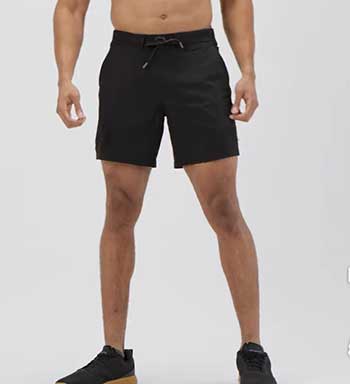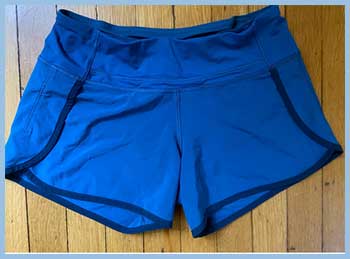Activewear has become a staple in most people’s wardrobes. With more folks prioritizing fitness and wellness, brands like hylete and lululemon have exploded in popularity. But with so many options on the market, how do you decide which brand to buy?
In this comprehensive guide, we’ll break down the key differences between hylete and lululemon. We’ll compare their product offerings, price points, sustainability efforts, and more. Read on to find out which activewear giant reigns supreme.
A Brief Comparison Table
| Category | Lululemon | Hylete |
| Founding Year | 1998 | 2012 |
| Headquarters | Vancouver, Canada | Solana Beach, CA |
| Main Products | Yoga apparel, athleisurewear | Performance athletic wear |
| Size Range | 0-20, runs small | XS-XL women’s, S-XXL men’s |
| Price Range | $48-$128 USD | $35-$100 USD |
| Quality | Generally excellent, some inconsistency | Mixed reviews on durability |
| Technical Features | Medium – some moisture wicking, stretch, breathability | High – patented fabrics, odor control, UV protection, etc. |
| Sustainability | Public goals for 2030 but still improving | Limited info available, using some eco fabrics |
| Style | Feminine, stylish, fun prints | Masculine, minimalist, dark colors |
| Stores | 539 locations worldwide | Mainly online, few showrooms |
Overview Of Hylete And Lululemon

Founded in 2012, Hylete is a relative newcomer to the activewear space. Their product line includes leggings, shorts, tops, outerwear, and other workout gear for men and women. The California-based company prides itself on creating high-quality, innovative athletic apparel.
Lululemon, on the other hand, has been around since 1998. The Canadian brand is practically synonymous with yoga gear and athleisure wear. Beyond yoga pants and athletic apparel, lululemon sells bags, accessories, and self-care products.
Both Hylete and lululemon have developed cult followings among fitness enthusiasts. However, they take slightly different approaches with their brand identities and target markets.
Product Offerings
One of the biggest differences between Hylete and lululemon lies in their product offerings.
Lululemon rose to fame thanks to their yoga-specific clothing. While they’ve expanded into running, training, and casual wear, yoga pants and tops remain at the core of their selection. Their leggings come in three main styles: Align (ultra-soft and stretchy), Wunder Under (structured, compression fit), and InStill (lightweight for hot yoga). For tops, swiftlys (workout tanks) and long line bras are customer favorites.
Hylete, on the other hand, aims to outfit people for any type of workout – from HIIT to running and everything in between. They offer far more variety in shorts, tops, jacket, and pants styles. This includes everything from minimalist running shorts to rain jackets and hiking pants. Hylete prides itself on technical innovation and performance-driven activewear.
Both brands offer accessories like bags, hats, socks, and underwear. Lululemon’s self-care range features lotions, deodorant, face masks and more. Hylete has a smaller selection of bags and other accessories.
Fit And Sizing

Lululemon sizing runs from 0-20, using an alphabetical and numerical system (for example, size 4 = size C). Their sizes tend to run small, so most fans recommend sizing up. The fabrics are generally stretchy and flexible to support different body types.
Hylete uses standard XS-XL sizing for women and S-XXL for men. Reviews note their leggings and tops fit true to size. However, some items like shorts and pants vary – check each product’s sizing chart. Hylete aims for a tight, performance-driven fit across their range.
So in summary:
- Lululemon has more variety in yoga wear, Hylete offers diverse activewear for training.
- Lululemon’s sizing is less consistent but mostly caters to slimmer bodies.
- Hylete focuses on true-to-size, technical fits across all their apparel.
Pricing And Value Comparison
In terms of cost, both hylete and Lululemon price their products as premium athleticwear. However, Lululemon’s pieces tend to cost slightly more on average.
For example, leggings at Lululemon generally range from $88 USD (for the Basic Leggings) to $118 USD (for the Align Pants). Their popular Define Jacket costs $128. Tops and tanks vary from $48 to $88.
Hylete leggings fall between $84-$100 USD, with most around $90-95 USD. Shorts cost approximately $50-70 USD. Tops range from $40-60 USD. Outerwear starts at $85 USD.
Lululemon also charges more for accessories, with bags starting at $48 USD versus $35 USD for Hylete’s.
However, Lululemon fans argue you get what you pay for in terms of quality and comfort. Devotees say their leggings hold up well over years of frequent use. Hylete reviewers are mixed – some say it’s worth the price for high-tech apparel, others argue it’s overpriced.
So in summary:
- Lululemon charges slightly higher prices across the board.
- Many customers agree Lululemon is worth the investment long-term.
- Hylete’s pricing also reflects a premium activewear brand.
- But quality perceptions are more mixed for the value of Hylete gear.
Also Read: Is Hylete Better Than Ten Thousand?
Sustainability And Ethical Practices
Today’s consumers care about the environmental and social impacts of their purchases. So how do hylete and lululemon compare when it comes to sustainability?
Lululemon has made public commitments to use more sustainable materials and reduce waste. By 2030 they pledge to use 100% sustainable cotton, polyester, and nylon. They partner with bluesign technologies to improve supply chain and manufacturing practices. Approximately 11% of their current materials are recycled, reclaimed, or sustainable.
The company has also set goals around becoming carbon neutral and using 100% renewable electricity by 2030. They’ve partnered with the United Nations on gender equality initiatives as well.
Hylete discloses less about their specific sustainability practices. The company uses some eco-friendly fabrics like recycled polyester in certain products. But they have no published goals or reports on improving sustainability.
Some consumers argue Lululemon still has room to improve despite their public pledges. Others believe hylete needs more transparency and progress around social responsibility.
In summary:
- Lululemon has made public commitments to sustainability but has work left to do.
- Hylete uses some eco-friendly materials but lacks sustainability reports and goals.
- Both brands have room for improvement in ethical and eco-conscious practices.
Style And Design Elements
Looking at style and design provides more clues to the target demographics of each brand.
Lululemon’s aesthetic emphasizes bright colors, fun prints and patterns, and streetwear-inspired details. They lean heavily into the self-care and wellness aspect of yoga culture. Much of their clothing integrates stretchy, breathable technical fabrics. But design takes precedence over hardcore performance features.
Hylete gears their look towards athletic performance above all else. They use highly technical fabrics with moisture-wicking, 4-way stretch, odor control, UV protection, and other functional features. Their color palette and cuts are more masculine, with lots of dark hues and minimalist styles.
In general, Lululemon targets a younger female demographic seeking fashionable workout gear. Their fun vibe caters to trendy yoga lovers and athletes. Hylete designs for endurance athletes obsessed with quality performance gear, skewing towards more males.
In summary:
- Lululemon prioritizes style, femininity, and streetwear-inspired looks.
- Hylete focuses on high-tech features and masculine, functional design.
- Lululemon attracts trendier and more lifestyle athletes.
- Hylete caters to hardcore fitness enthusiasts and endurance athletes.
Additional Pros And Cons Of Each Brand
Based on the differences above, what are the general upsides and downsides of hylete Vs. lululemon?
Lululemon Pros
- Huge selection of stylish yoga wear and athleisure apparel
- Luxtreme and Nulu fabrics offer exceptional comfort
- Frequent new collections and collabs to add fresh designs
- Stores offer community events and workouts
- Resale program and trade-ins for gently used items
Lululemon Cons
- Prices run higher than competitors
- Limited technical features for hardcore athletes
- Sizing and fit can be inconsistent
- Some say quality has declined slightly over the years
Hylete Pros
- Innovative performance fabrics and functional features
- Frequent sales and discount codes available
- Caters to diverse athletic pursuits like CrossFit, HIIT, and lifting
- Wide variety of shorts, pants, tops for men and women
Hylete Cons
- Much smaller brand recognition and following
- Unclear sustainability practices
- Quality and durability concerns noted in some reviews
- Limited stores – must shop online
Also watch this about Hylete!
Frequently Asked Questions (FAQ)
Hylete positions itself as a premium athleticwear brand, so their prices reflect that. The company uses patented technical fabrics that integrate features like moisture-wicking, stretch, and odor control. These specialty textiles and performance additions come at a higher cost. Consumers pay for the innovation and quality construction of Hylete apparel. However, some feel the prices are too high for smaller startup brand.
Hylete caters to hardcore athletes seeking functional, high-performance gear. Some similar brands that offer technical apparel include Outdoor Voices, Under Armour, Nobull, and Chroma. For budget-conscious consumers, Amazon’s Core 10 brand provides comparable activewear at lower prices.
Hylete was founded by former Reebok employees Ron Wilson and Matt Paulson in San Diego, California. Wilson serves as CEO and Paulson as COO. The brand uses proprietary fabrics designed exclusively for Hylete like Frame, Flexion, and Encompass. They work with specialty manufacturers around the world to craft their apparel.
Hylete is headquartered in Solana Beach, California, just north of San Diego. They operate primarily as an ecommerce company, selling their apparel through the Hylete website. However, the brand does have a few brick-and-mortar showroom locations in California for customers to try on products.
Also Read: Comparison Between Rhone And Lululemon.
The Verdict
For most casual gym-goers and lifestyle athletes, Lululemon takes the lead. The brand offers far more variety in stylish apparel that transitions seamlessly from studio to street. Those obsessed with yoga and Pilates will love the stretchy, luxe fabrics optimized for their practice.
However, hardcore athletes like marathon runners and CrossFit enthusiasts may prefer Hylete. The technical innovation and performance-first mentality caters to their training needs. Just be prepared to research fit and quality from item to item.
There’s also the sustainability factor to consider. Lululemon publicly shares their ethical commitments, though expectations remain high. Hylete has significant room for improvement through greener materials and supply chain practices.
At the end of the day, it comes down to your budget, priorities, and fitness routine. Both Lululemon and Hylete make excellent activewear, albeit for slightly different audiences. Take time to review sizing guides and browse all the options before deciding which brand suits your needs.
